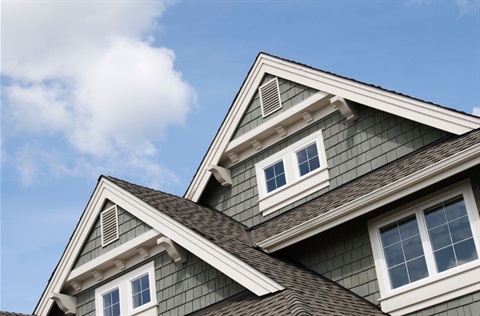New planning reforms to increase density
Published on 07 May 2024

The NSW Government have indicated that they intend for their low-rise and mid-rise housing reforms proposal to take effect by the end of June 2024 through changes to planning legislation.
Council put in a submission to the proposal in February and we have been advised that all submissions have now been reviewed.
A ‘What We Heard' report is being prepared and will be released shortly, capturing feedback and insights received through the public exhibition process.
The NSW Government have also advised Council of their intention to collaborate and meet with us in May to further refine the policy and ensure it achieves good outcomes.
The proposal
The proposal aims to increase housing density across the state. You can read more about the proposed changes in the Diverse and well-located homes information prepared by the Department of Planning and Environment.
One of the ways the NSW Government plan to accomplish this housing density is by allowing dual occupancy in all areas zoned R2 Low Density Residential within Greater Sydney. This means that land as small as 450sqm can be developed into two dwellings with a building height of 9.5m. Under the Hunter’s Hill Local Environment Plan (LEP), the current minimum lot size for dual occupancy is 700sqm.
The proposal will also introduce non-refusal standards that will apply to dual occupancies and override Council's LEP. This will allow developers to bypass Council's local planning rules that reflect our community’s vision, and draws on each suburbs amenity and character.
Additionally, town centre precincts (areas within 800m of land zoned E1 Local Centre or MU1 Mixed Use with a wide range of frequently needed goods and services such as supermarkets, shops and restaurants) will have the following developments permissible –
- On land zoned R2 (Low Density Residential) with a minimum land size of 500sqm: manor houses and multi dwelling terrace housing with a building height of 9.5m.
- On land zoned R2 with a minimum land size of 600sqm: multi dwelling housing with a building height of 9.5m.
- On land zoned R3 (Medium Density Residential) within 400m of an area zoned E1 or MU1 as applicable: residential flat buildings and shop top housing up to 21m in height.
- On land zoned R3 between 400m – 800m of an area zoned E1 or MU1 as applicable: residential flat buildings and shop top housing up to 16m in height.
Based on information available from the NSW Government, it is not yet clear which land zoned E1 or MU1 within the Hunter’s Hill Municipality the above rules will apply to.
What has Council done?
Council held an Extraordinary Council Meeting on Monday 19 February 2024, to consider the proposed housing reforms and resolved to provide a submission on the impacts this has on Hunters Hill. Council then lodged a submission(PDF, 308KB) to the Department, including Council’s report and resolution.
A Community Information Session was also held on Wednesday 3 April. Feedback from community members were forwarded to the Minister for Planning, calling on the NSW Government to withdraw the proposed reforms.
What the changes mean for Hunters Hill
- Land as small as 450sqm can be developed into two dwellings with a building height of 9.5m.
- Potential for 6 to 7 storey mid-rise apartment blocks near local town centres.
- Overriding existing planning controls such as those for heritage and environment.
- Increasing density will put pressure on our local infrastructure, community facilities and services including our local roads, our tree canopy, schools, sportsgrounds and waste services.
- Introducing ‘non-refusal standards’ for the new planning controls by which development consent may not be refused.
Transport Oriented Development
The first stage of the NSW Government’s Transport Oriented Development (TOD) planning reforms has been implemented through an amendment to the State Environmental Planning Policy (Housing) - Chapter 5 Transport oriented development (the Housing SEPP).
The amended planning controls will apply within 400m of 37 stations to deliver more affordable, well-designed and well-located homes.
The new planning controls for the TOD areas are:
- Permissibility – Allowing residential flat buildings in residential zones and local centre zones, along with shop top housing in local centre and commercial zones.
- Building Height – A 22 metre height for residential flat buildings to maintain design standards, and a maximum building of 24m for buildings containing shop top housing to accommodate commercial ceiling height.
- Floor space ratio (FSR) – A maximum FSR of 2.5:1 has been set. This allows for buildings of up to 6 storeys while providing for good design outcomes in relation to landscaping, building setbacks, privacy and open space.
- Lot size and width – Introduction of a minimum lot width of 21m and no minimum lot size.
- Street frontages – The inclusion of a clause which applies to local centre zones to consider of active street frontages of buildings at the ground floor.
- Heritage – The new planning controls will apply in heritage conservation areas. However, a merit-based assessment will continue to apply to developments in these locations and relevant heritage controls will apply to the extent they are not inconsistent with the new standards.
- Affordable Housing – A 2% mandatory affordable housing contribution, delivered onsite and in perpetuity for developments with a minimum Gross Floor Area of 2000sqm. Affordable housing must be managed by a registered community housing provider. The percentage of the affordable housing contribution will be increased over time.
- Apartment design guide (ADG) – The guide will continue to be the principal guiding document for apartment development, including TOD developments.
The above TOD reforms do not directly apply to the Hunters Hill Municipality. However, some future potential changes through the 'diverse and well located homes program' do have the potential to apply.